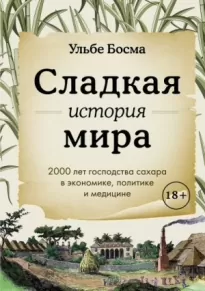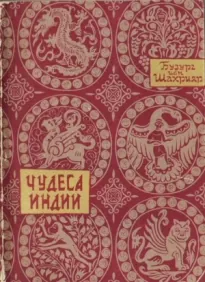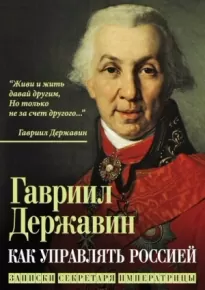Сладкая история мира. 2000 лет господства сахара в экономике, политике и медицине

- Автор: Ульбе Босма
- Жанр: Научная литература / Исторические приключения / История: прочее
Читать книгу "Сладкая история мира. 2000 лет господства сахара в экономике, политике и медицине"
3. Война и рабство
1 David Harvey, «The Spatial Fix – Hegel, Von Thunen, and Marx,» Antipode 13, no. 3 (1981): 1–12.
2 Fernando Ortiz, Cuban Counterpoint: Tobacco and Sugar (New York: Vintage Books, 1970), 268.
3 Klaus Weber, «Deutschland, der atlantische Sklavenhandel und die Plantagenwirtschaft der Neuen Welt,» Journal of Modern European History 7, no. 1 (2009): 41–42; Julia Roth, «Sugar and Slaves: The Augsburg Welser as Conquerors of America and Colonial Foundational Myths,» Atlantic Studies 14, no. 4 (2017): 439–441.
4 Genaro Rodríguez Morel, «Esclavitud y vida rural en las plantaciones azucareras de Santo Domingo, siglo XVI,» Genaro Anuario de Estudios Americanos 49 (1992): 6. О внедрении горизонтальной мельницы с двумя валками см. также: Anthony-Stevens Acevedo, «The Machines That Milled the Suger-Canes: The Horizontal Double Roller Mills in the First Sugar Plantations of the Americas» (неопубликованная рукопись, 2013).
5 Ward J.Barrett, The Sugar Hacienda of Marqueses de Valle (Minneapolis: University of Minnesota Press, 1970), 11.
6 Говоря о цифре в 2000–2500 тонн, я основываюсь на том факте, что в Испанской Америке насчитывалось лишь пятьдесят сахарных заводов с плантациями и как минимум небольшое количество прессов, как установлено в источнике: Lorenzo E.López y Sebastián and Rió Moreno, «Commercio y transporte en la economía del azucar antillano durante el siglo XVI,» no. 49 (1992). О производстве сахара на Эспаньоле в XVI веке, см.: López y Sebastián and Rió Moreno, «Commercio y transporte,» 29–30; Mervin Ratekin, «The Early Sugar Industry in Española,» Hispanic American Historical Review 34, no. 1 (1954): 13.
7 См.: I.A.Wright, «The History of the Cane Sugar Industry in the West Indies V,» Louisiana Planter and Sugar Manufacturer 63. no. 15 (1919). Импорт сахара в Севилью резко сократился в 1580-х годах; см.: Huguette Chaunu and Pierre Chaunu, Séville et l’Atlantique: 1506–1650: Première partie: Partie statistique (Paris: S.E.V.P.E.N., 1956), VI2, pp. 1004–1005, table 702.
8 Arlindo Manuel Caldeira, «Learning the Ropes in the Tropics: Slavery and the Plantation System on the Island of São Tomé,» African Economic History, no. 39 (2011): 48–49.
9 H.A.Gemery and J.S.Hogendorn, «Comparative Disadvantage: The Case of Sugar Cultivation in West Africa,» Journal of Interdisciplinary History 9, no. 3 (1979): 431, 447–449.
1 °Christopher Ebert, Between Empires: Brazilian Sugar in the Early Atlantic Economy, 1550–1630 (Leiden: Brill, 2008), 22, 152; Eddy Stols, De Spaanse Brabandens of de Handelsbetrekkingen der Zuidelijke Nederlanden met de Iberische wereld 1598–1648 (Brussels: Paleis der Academiën, 1971), 102–103.
11 J.H.Galloway, «Tradition and Innovation in the American Sugar Industry, c. 1500–1800: An Explanation,» Annals of the Association of American Geographers 75, no. 3 (1985): 339. О мощности бразильских мельниц см.: Stuart B.Schwarz (Chapel Hill: University of North Carolina Press, 2004), 165.
12 Kit Sims Taylor, «The Economics of Sugar and Slavery in Northeastern Brazil,» Agricultural History 44, no. 3 (1970): 272.
13 О производительности в расчете на раба, см.: Stuart B. Schwartz, «Introduction,» in Tropical Babylons: Sugar and the Making of the Atlantic World, 1450–1680, ed. Stuart B.Schwarz (Chapel Hill: University of North Carolina Press, 2004), 19. См. также: «Trans-Atlantic Slave Trade – Estimates,» Slave Voyages, дата обращения 20.01.2022, https://www.slavevoyages.org/assessment/estimates; Noël Deerr, The History of Sugar, vol. 1 (London: Chapman and Hall, 1949), 112.
14 Yda Schreuder, Amsterdam’s Sephardic Merchants and the Atlantic Sugar Trade in the Seventeenth Century (London: Palgrave Macmillan, 2019), 52.
15 Kristof Glamann, Dutch-Asiatic Trade: 1620–1740 (The Hague: Nijhoff, 1958), 153.
16 Schreuder, Amsterdam’s Sephardic Merchants, 108.
17 J.J.Reesse, De Suikerhandel van Amsterdam: Bijgrade tot de Handelsgeschiedenis des Vaderlands, Hoofdzakelijk uit de Archieven verzameld, vol. 1 (Haarlem: J.L.E.I Kleynenberg, 1908), 132–133.
18 Markus P.M.Wink, «Freedom and Slavery: The Dutch Republic, the VOC World, and the Debate over the ‘World’s Oldest Trade,’» South African Historical Journal, no. 59 (2007): 23, 30.
19 José Antônio Gonsalves de Mello, G.N.Visser, and B.N.Teensma, Nederlanders in Brazilië (1624–1654): De Invloed van de Hollandse Bezetting op het Leven en de Cultuur in Noord-Brazilië (Zutphen, the Netherlands: Walburg Pers, 2001), 183, 185.
20 Henk den Heijer, «The Dutch West India Company, 1621–1791,» in Riches from Atlantic Commerce: Dutch Transatlantic Trade and Shipping, 1585–1817, ed. Johannes Postma and Victor Enthoven (Leiden: Brill, 2003), 88; приводится по источнику: Hermann Wätjen, Das holländische Kolonialreich in Brasilien: Ein Kapitel aus der Kolonialgeschichte des 17. Jahrhunderts (Gotha, Germany: Justus Perthes, 1921), 316–323.
21 Heijer, «The Dutch West India Company,» 88.
22 «Generale missiven van gouverneurs-generaal en raden aan heren XVII der Verenigde Oostindische Compagnie,» II, Grote Serie 112, pp. 613, 706, 758; III Grote Serie 125, pp. 238, 363, цифровая версия по адресу: http://resources.huygens.knaw.nl/; Guanmian Xu, «From the Atlantic to the Manchu: Taiwan Sugar and the Early Modern World, 1630s–1720s,» Journal of World History 33, no. 2 (2022): 3.
23 Larry Cragg, Englishmen Transplanted: The English Colonization of Barbados, 1627–1660 (Oxford: Oxford University Press, 2007), 19.
24 «Trans-Atlantic Slave Trade – Estimates»; William A.Green, «Supply versus Demand in the Barbarian Sugar Revolution,» Journal of Interdisciplinary History 18, no. 3 (1988): 411; Schreuder, Amsterdam’s Sephardic Merchants, 102–103.
25 Matthew Edel, «The Brazilian Sugar Cycle of the Seventeenth Century and the Rise of West Indian Competition,» Caribbean Studies 9, no. 1 (1969): 30.
26 Green, «Supply versus Demand,» 405; Richard Ligon, A True&Exact History of the Island of Barbados… (London: H.Moseley, 1657), 85–86.
27 Schreuder, Amsterdam’s Sephardic Merchants, 113, 134, 146, 156.
28 Christian J.Koot, Empire at the Periphery: British Colonists, Anglo-Dutch Trade, and the Development of the British Atlantic… (New York: New York University Press, 2011), 187.
29 Herbert I.Bloom, The Economic Activities of the Jews in Amsterdam in the Seventeenth and Eighteenth Centuries (Williamsport, PA: Bayard Press, 1937), 37.
30 Gyorgy Novaky, «On Trade, Production and Relations of Production: The Sugar Refineries of Seventeenth-Century Amsterdam,» Tijdschrift voor Sociale Geschiedenis 23, no. 4 (1997): 476; Jan van de Voort, «De Westindische Plantages van 1720–1795: Financiën en Handel» (Eindhoven, the Netherlands: De Witte, 1973), 26; Schreuder, Amsterdam’s Sephardic Merchants, 230, 234, 239–240, 243–245, 252.
31 David Watts, The West Indies: Patterns of Development, Culture and Environmental Change since 1492 (Cambridge: Cambridge University Press, 1998), 219–223; Galloway, «Tradition and Innovation,» 342.
32 Matthew Parker, The Sugar Barons: Family, Corruption, Empire, and War in the West Indies (New York: Walker, 2012), 143.
33 Cecilia Ann Karch, «The Transformation and Consolidation of the Corporate Plantation Economy in Barbados: 1860–1977» (PhD diss., Rutgers University, 1982), 158.
34 Метод «Рытья ям», по всей видимости, появился около 1670 года, см.: Peter Thompson, «Henry Drax’s Instructions on the Management of a Seventeenth-Century Barbadian Sugar Plantation,» William and Mary Quarterly 66, no. 3 (2009): 579. Менард предполагает, что позднее, в XVII веке, рытье ям заменили копанием траншей. Russell R.Menard, Sweet Negotiations: Sugar, Slavery, and Plantation Agriculture in Early Barbados (Charlottesville: University of Virginia Press, 2014), 71.
35 Justin Roberts, «Working between the Lines: Labor and Agriculture on Two Barbadian Sugar Plantations, 1796–97,» William and Mary Quarterly 63, no. 3 (2006): 580–582, 584; Robert Hermann Schomburgk, The History of Barbados (London: Longman, Brown, Green and Longmans, 1848), 166n.1.
36 Thomas D.Rogers, The Deepest Wounds: A Labor and Environmental History of Sugar in Northeast Brazil (Chapel Hill: University of North Carolina Press, 2010), 32–33. Лигон в своей книге (опубликованной в 1657 году) приводит очень информативный рисунок барбадосской сахарной мельницы, на котором видны пять котлов, мельница и варочное отделение, объединенные в тщательно спланированный завод. Ligon, A True&Exact History, 84–85.
37 Mohamed Ouerfelli, Le sucre: Production, commercialization et usages dans la Méditerranée médiévale (Leiden: Brill, 2008), 270–271.
38 Parker, The Sugar Barons, 46–51.
39 B.W.Higman, «The Sugar Revolution,» Economic History Review 53, no. 2 (2000): 213.
4 °Cм.: Robert Justin, «Surrendering Surinam: The Barbadian Diaspora and the Expansion of the English Sugar Frontier, 1650–75,» William and Mary Quarterly 73, no. 2 (2016): 225–226.
41 Schreuder, Amsterdam’s Sephardic Merchants, 181. См. также: Samuel Oppenheim, «An Early Jewish Colony in Western Guiana, 1658–1666, and Its Relation to the Jews in Surinam, Cayenne and Tobago,» Publications of the American Jewish Historical Society, no. 16 (1907): 95–186.
42 Michael-Christian Camus, «Le Général de Poincy, premier capitaliste sucrier des Antilles,» Revue française d’Histoire d’Outre-Mer 84, no. 317 (1997): 122.
43 Mordechai Arbell, «Jewish Settlements in the French Colonies in the Caribbean (Martinique, Guadeloupe, Haiti, Cayenne) and the ‘Black Code,’» in The Jews and the Expansion of Europe to the West, 1450–1800, ed. Paolo Bernardini and Norman Fiering (New York: Berghann Books, 2001), 288–290; Guy Josa, «Les industries du sucre et du rhum à la Martinique (1639–1931)» (PhD diss., Université de Paris, 1931), 12, 33–34.
44 Abdoulaye Ly, «La formation de l’economie sucrière et le développement du marché d’esclaves africains dans les Iles françaises d’Amerique au XVIIe siècle,» Présence Africaine, no. 13 (1957), 20–21, no. 16 (1957), 120n.14, 125.
45 Alex Borucki, David Eltis, and David Wheat, «Atlantic History and the Slave Trade to Spanish America,» American Historical Review 120, no. 2 (2015): 440.
46 Галлоуэй также указывает на другие факторы, например на ухудшение сельскохозяйственных условий, вызванное засухами. J.H.Galloway, «Northeast Brazil 1700–1750: The Agricultural Crisis Re-Examined,» Journal of Historical Geography 1, no. 1 (1975): 21–38.
47 Taylor, «The Economics of Sugar,» 270n.13. См. также: Henry Koster, Travels in Brazil (London: Printed for Longman, Hurst, Rees, Orme, and Brown, 1816), 348–349.
48 Shawn W.Miller, «Fuelwood in Colonial Brazil: The Economic and Social Consequences of Fuel Depletion for the Bahian Recôncavo, 1549–1820,» Forest&Conservation History 38, no. 4 (1994): 183, 186, 189–190; Koster, Travels in Brazil, 346, 358, 360.
49 Несмотря на то что Дирр только предполагает, что две трети порабощенных людей, перевозимых из Африки, направлялись на сахарные плантации, его оценка вполне может оказаться точной. Noël Deerr, The History of Sugar, vol. 2 (London: Chapman and Hall, 1950), 284. См. также: B.W.Higman, Slave Population and Economy in Jamaica, 1807–1834 (Kingston, Jamaica: University of the West Indies Press, 1995), 243–244.
50 Deerr, The History of Sugar, 1:239. О числе рабов, перевезенных из Восточной Африки в Сан-Доминго, см.: David Eltis and David Richardson, Atlas of the Transatlantic Slave Trade (New Haven, CT: Yale University Press, 2015), 248.
51 Roberts, «Working between the Lines,» 569, 579, 581.
52 C.L.R.James, The Black Jacobins: Toussaint l’Ouverture and the San Domingo Revolution (New York: Vintage, 1989), 392.
53 Roberts, «Working between the Lines,» 560–561; Jennifer L. Morgan, Laboring Women: Reproduction and Gender in the New World Slavery (Philadelphia: University of Pennsylvania Press, 2004), 147–149; Ligon, A True&Exact History, 48.
54 Mello, Visser, and Teensma, Nederlanders in Brazilië, 142, 148–152.
55 Слова Лаба приводятся по источнику: Judith Ann Carney and Richard Nicholas Rosomoff, In the Shadow of Slavery: Africa’s Botanical Legacy in the Atlantic World (Berkeley: University of California Press, 2011), 110; Dale Tomich, «Une petite Guinée: Provision Ground and Plantation in Martinique, 1830–1848,» in The Slaves Economy: Independent Production by Slaves in the Americas, ed. Ira Berlin and Philip D.Morgan (London: Frank Cass, 1929), 71.
56 Edmund Oskar von Lippmann, Geschichte des Zuckers: Seit den ältesten Zeiten bis zum Beginn der Rübenzucker-Fabrikation: ein Beitrag zur Kulturgeschichte (Berlin: Springer, 1929), 503–504.
57 J.R.Ward, British West Indian Slavery, 1750–1834: The Process of Amelioration (New York: Oxford University Press, 1991), 22–24, 151–155; J.S.Handler and R.S.Corruccini, «Plantation Slave Life in Barbados: A Physical Anthropological Analysis,» Journal of Interdisciplinary History 14, no. 1 (1983): 75, 78.
58 Jean Baptiste Labat, Nouveau voyage aux isles de l’Amerique: Contenant l’histoire naturelle de ces pays, l’origine, les moeurs, la religion&le gouvernement des habitans anciens&modernes, vol. 3 (Paris: Chez Guillaume Cavelier pere, 1742), 356–358.
59 John Gabriel Stedman, Reize in de Binnenlanden van Suriname, 2 vols. (Leiden: A.en J.Honkoop, 1799), 2:200.
60 Jerome S.Handler and Diane Wallman, «Production Activities in the Household Economies of Plantation Slaves: Barbados and Martinique, Mid-1600s to Mid-1800s,» International Journal of Historical Archaeology 18, no. 3 (2014): 449, 450, 454–456, 461; Carney and Rosomoff, In the Shadow, 76–79, 106, 132; Hilary McD. Beckles, «An Economic Life of Their Own: Slaves as a Commodity Producers and Distributors in Barbados,» in The Slaves Economy: Independent Production by Slaves in the Americas, ed. Ira Berlin and Philip D.Morgan (London: Frank Cass, 1991), 32–34.
61 Carney and Rosomoff, In the Shadow, 76–79.
62 Gilberto Freyre, The Mansions and the Shanties (Sobrados у Mucambos): The Making of Modern Brazil (New York: A.A.Knopf, 1968), 186, 189.
63 Handler and Wallman, «Production Activities,» 458–460.
64 Sweeney, «Market Marronage, Fugitive Women and the Internal Marketing System in Jamaica, 1781–1834,» William and Mary Quarterly 76, no. 2 (2019): 201.
65 Robert Robertson, A Detection of the State and Situation of the Present Sugar Planters: Of Barbadoes and the Leward Islands (London: J. Wilford, 1732), 44; Stedman, Reize, 1:142.
66 Ligon, A True&Exact History, 50–51; Vincent Brown, The Reaper’s Garden: Death and Power in the World of Atlantic Slavery (Cambridge, MA: Harvard University Press, 2010), 132–133.
67 William Beckford, Remarks upon the Situation of Negroes in Jamaica: Impartially Made from a Local Experience of Nearly Thirteen Years in That Island… (London: Printed for T. and J.Egerton, 1788), 23.
68 Stedman, Reize, 2:203.
69 Daniel L.Walker, No More, No More: Slavery and Cultural Resistance in Havana and New Orleans (Minneapolis: University of Minnesota Press, 2004), 14–15.
70 Londa Schiebinger, Plants and Empire: Colonial Bioprospecting in the Atlantic World (Cambridge, MA: Harvard University Press), chap. 3.
71 Robertson, A Detection of the State, 49.
72 Hilary Beckles, Afro-Caribbean Women and Resistance to Slavery in Barbados (London: Karnak House, 1988), 69–70.
73 Caldeira, «Learning the Ropes,» 59; Deerr, The History of Sugar, 2:318.
74 Morgan, Laboring Women, 175.
75 Menard, Sweet Negotiations, 112, 120. О подделке документов см.: Beckles, Afro-Caribbean Women, 63.
76 Jerome S.Handler and Charlotte J.Frisbie, «Aspects of Slave Life in Barbados: Music and Its Cultural Context,» Caribbean Studies 11, no. 4 (1972): 8.
77 См., например: Stuart B.Schwartz, Slaves, Peasants, and Rebels: Reconsidering Brazilian Slavery (Urbana: University of Illinois Press, 1992), chap. 4. См. также: Richard Price, Maroon Societies: Rebel Slave Communities in the Americas (Baltimore, MD: Johns Hopkins University Press, 1979); Vincent Brown, Tacky’s Revolt: The Story of an Atlantic Slave War (Cambridge, MA: Harvard University Press, 2022).
78 Stedman, Reize, 2:13–14.
79 Laurent Dubois, Avengers of the New World: The Story of the Haitian Revolution (Cambridge, MA: Harvard University Press, 2005), 55, 62.
8 °Cм. например: Douglas Hall, In Miserable Slavery: Thomas Thistlewood in Jamaica, 1750–86 (London: Macmillan, 1989).
81 Zachary Macaulay and Margaret Jean Trevelyan Knutsford, Life and Letters of Zachary Macaulay (London: E. Arnold, 1900), 8.
82 См.: Dave Gosse, «The Politics of Morality: The Debate Surrounding the 1807 Abolition of the Slave Trade,» Caribbean Quarterly 56, nos. 1–2 (2010): 127–138; Katherine Paugh, Politics of Reproduction: Race, Medicine, and Fertility in the Age of Abolition (New York: Oxford University Press, 2017), 26, 31–36, 42–43.
83 Alex van Stipriaan, Surinaams Contrast: Roofbouw en Overleven in een Caraïbische Plantagekolonie 1750–1863 (Leiden: KITLV, 1993), 323; Nicole Vanony-Frisch, «Les esclaves de la Guadeloupe à la fin de l’Ancien Régime d’après les sources notariales (1770–1789),» Bulletin de la Société d’Histoire de la Guadeloupe, nos. 63–64 (1985): 52–53; S. D. Smith, Slavery, Family, and Gentry Capitalism in the British Atlantic: The World of the Lascelles, 1648–1834 (Cambridge: Cambridge University Press, 2010), 284. Кратон и Гринлэнд приводят частоту естественной убыли (смерти минус рождения) в 2 % на 1783 год. Michael J. Craton and Garry Greenland, Searching for the Invisible Man: Slaves and Plantation Life in Jamaica (Cambridge, MA: Harvard University Press, 1978), 85.





